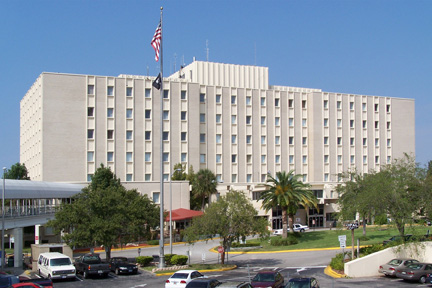EPA is using this project to demonstrate that sustainable design and LID can be utilized in high profile, urban sites that must pass through rigorous aesthetic design reviews. (www.epa.gov)
The U.S. Environmental Protection Agency (EPA) and U.S. General Services Administration (GSA) are demonstrating low impact development (LID) and sustainable stormwater management practices in a landscape renovation project at EPA’s Federal Triangle Headquarters in Washington, DC. Initiated in May 2001, this multi-year project involves three landscape retrofit projects at EPA’s Federal Triangle Headquarters complex.
The Federal Triangle complex’s building roofs, sidewalks, courtyards, and parking areas make the area approximately 95 percent impervious to rain. Through this green infrastructure project, however, EPA will reduce the adverse impacts of stormwater flows from the 25-acre site. The Agency also hopes to reduce the peak volume and pollutant load of its stormwater runoff and serve as a model for future LID projects nationwide.
Completed in December 2006, the 8,600-square-foot Ariel Rios South Courtyard (see diagram), at the southeast corner of Federal Triangle, is the largest phase of the demonstration project. Showcasing the sustainable strategy of addressing targeted watershed goals and objectives by using LID stormwater management techniques, the courtyard demonstrates a wide range of techniques in its 6,400 square feet of LID landscaping. Particularly, it includes two bioretention cells that provide more than 400 cubic feet of stormwater storage volume and a 1,128-gallon cistern to collect stormwater that is recycled for irrigation of the site.
Based on rainfall in 2006, it is estimated that the LID components divert approximately 70 percent of the rainwater that falls on the courtyard throughout the year from the storm sewer. It is also estimated that reusing the rainwater collected in the cistern for irrigation will, in turn, reduce the need for potable water by approximately 30 percent.
The most publicly visible phase of the project is a retrofit of the landscaping that lies at the south end of the Federal Triangle complex, on Constitution Avenue. Completed in April 2005, the area includes 1,264 square feet of bioretention cells, which provide another 400 cubic feet of stormwater storage volume. The site demonstrates how disconnection, storage, evaporation, and sustainable plantings, combined with high-efficiency irrigation systems, can be used on a large scale. EPA seized the opportunity to promote LID and proper stormwater management to passersby in this high foot traffic area and is awaiting final approval to integrate educational signage and materials on this site in Fall 2007.
The construction contract for the final phase of the projectan installation of six cisterns, with a total capacity of 6,000 gallons, in the parking garage under the EPA West Buildingis to be awarded in Summer 2007. The cisterns are designed to collect runoff from the Federal Triangle complex roofs and reuse it for irrigation of a portion of the Constitution Avenue site.
Results for the entire project will not be available until the third phase of the project is complete. Using preliminary estimates from the courtyard as a guide, there is no doubt that the actual project results will indicate a substantial reduction in harmful stormwater runoff and potable water use.
Contact
Cathy Berlow
Architecture, Engineering, and Asset Management Branch
U.S. Environmental Protection Agency
berlow.cathy@epa.gov




